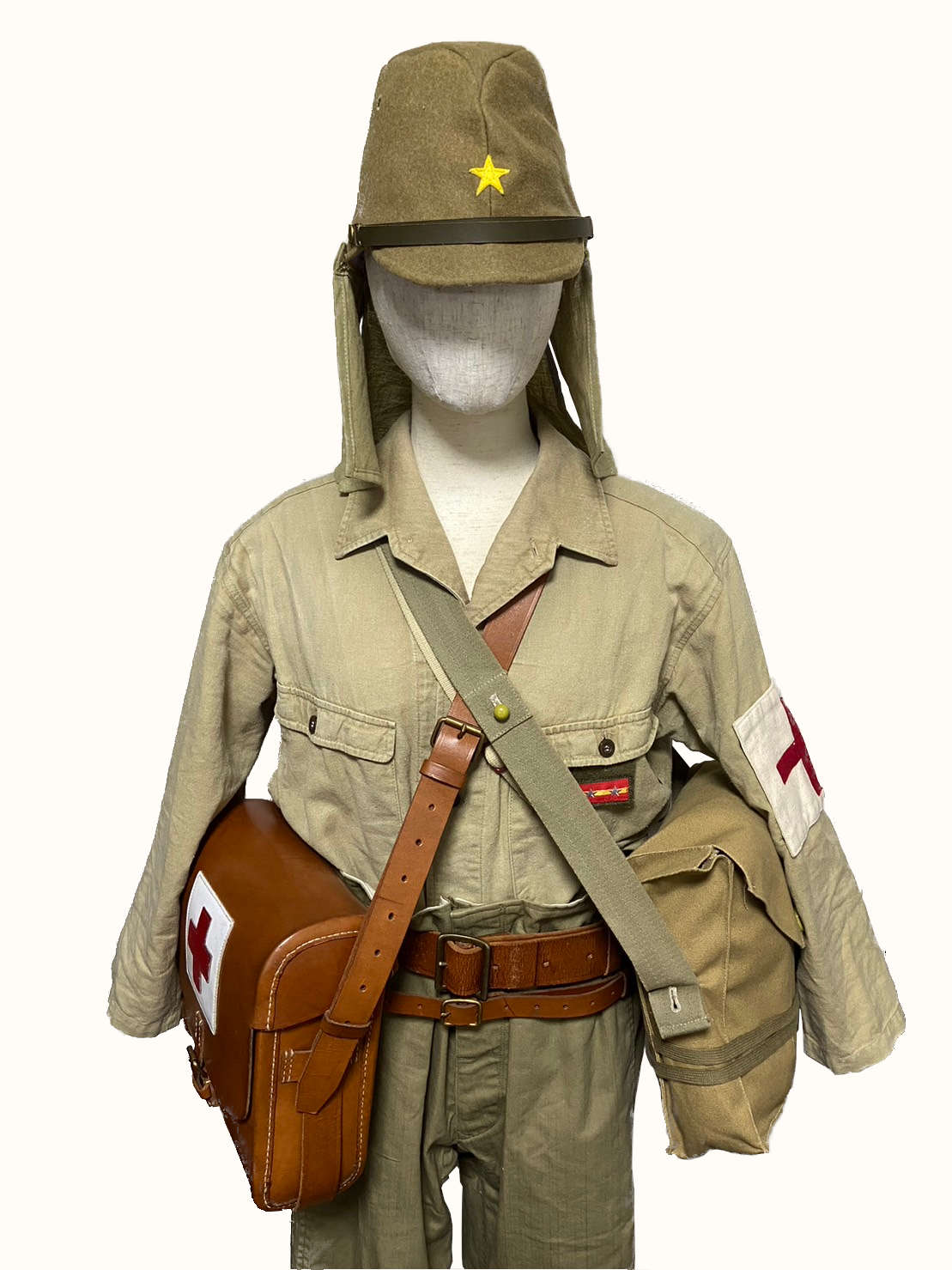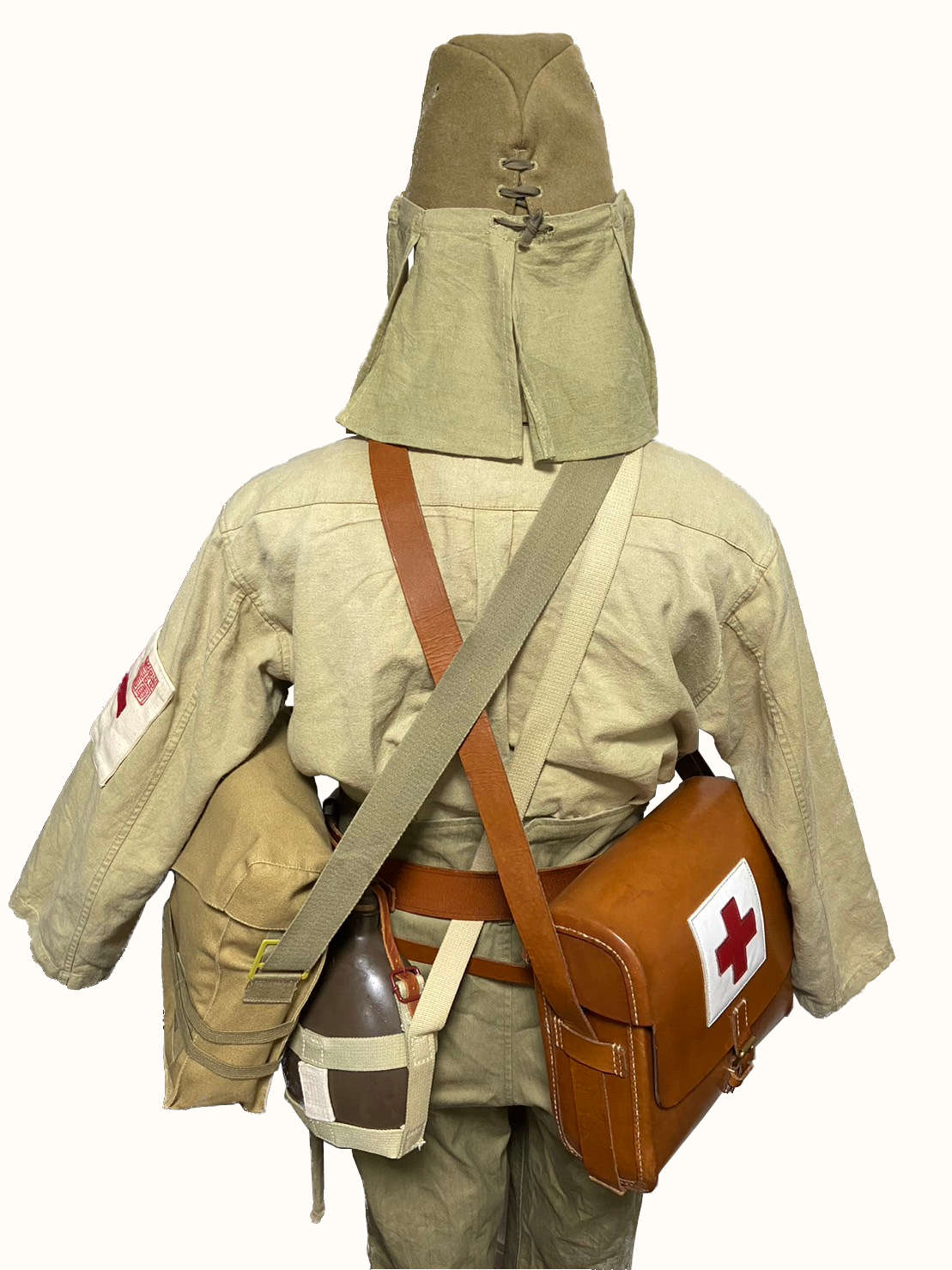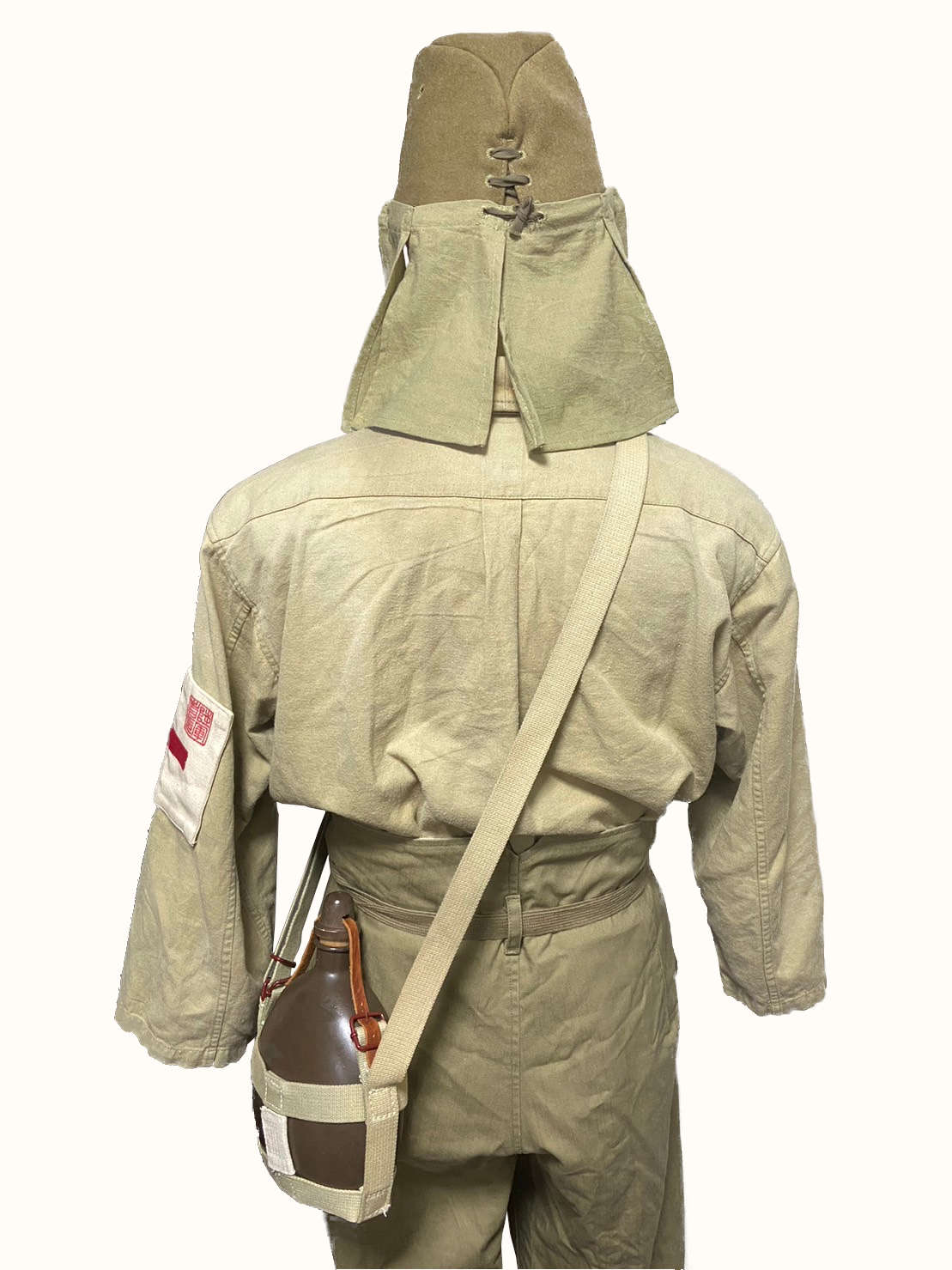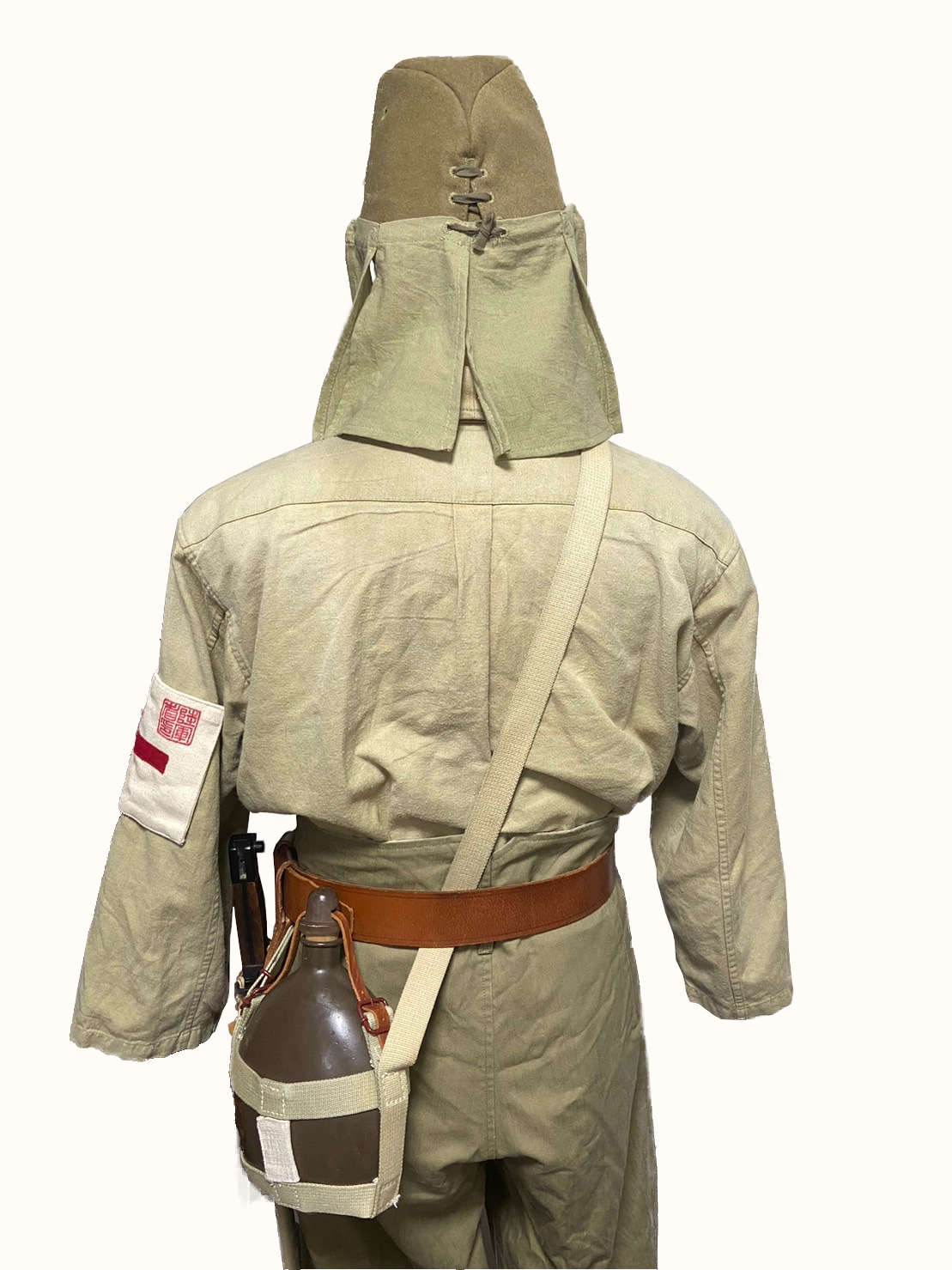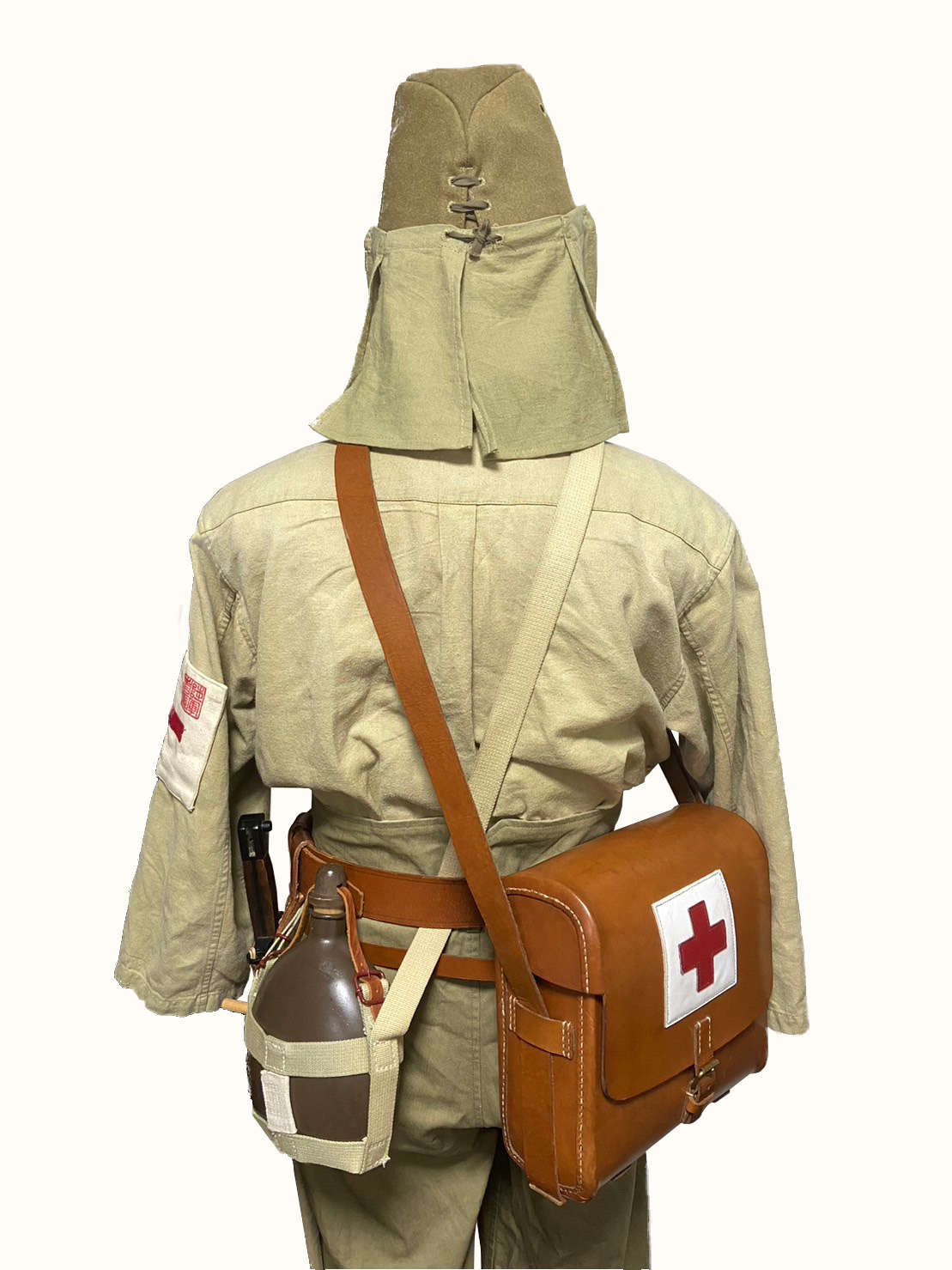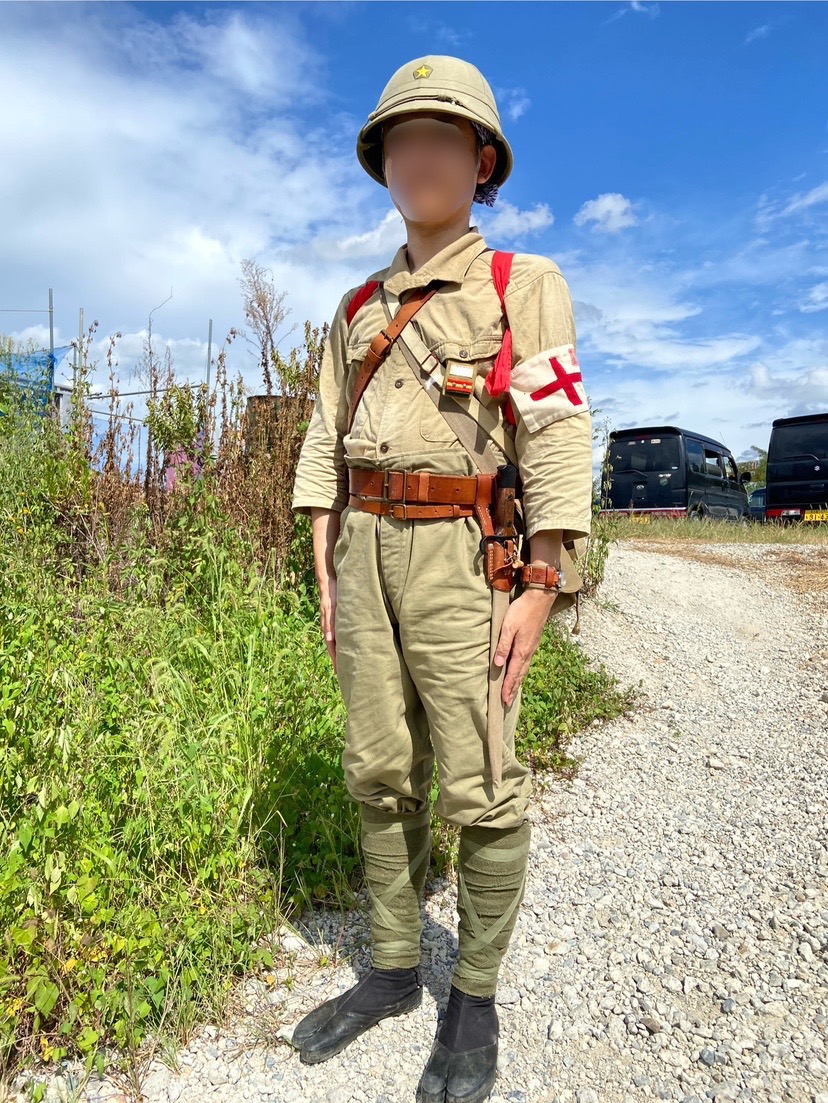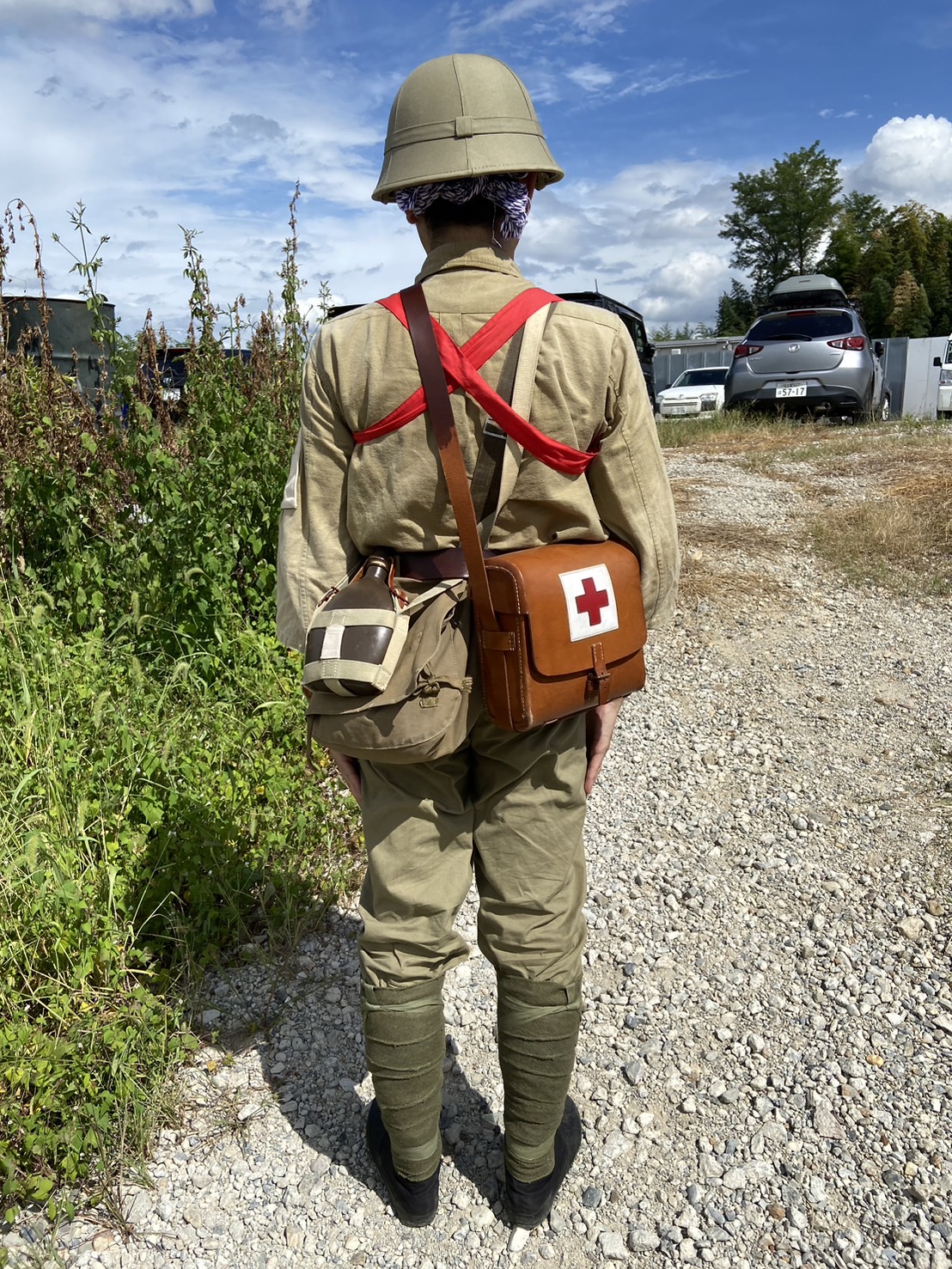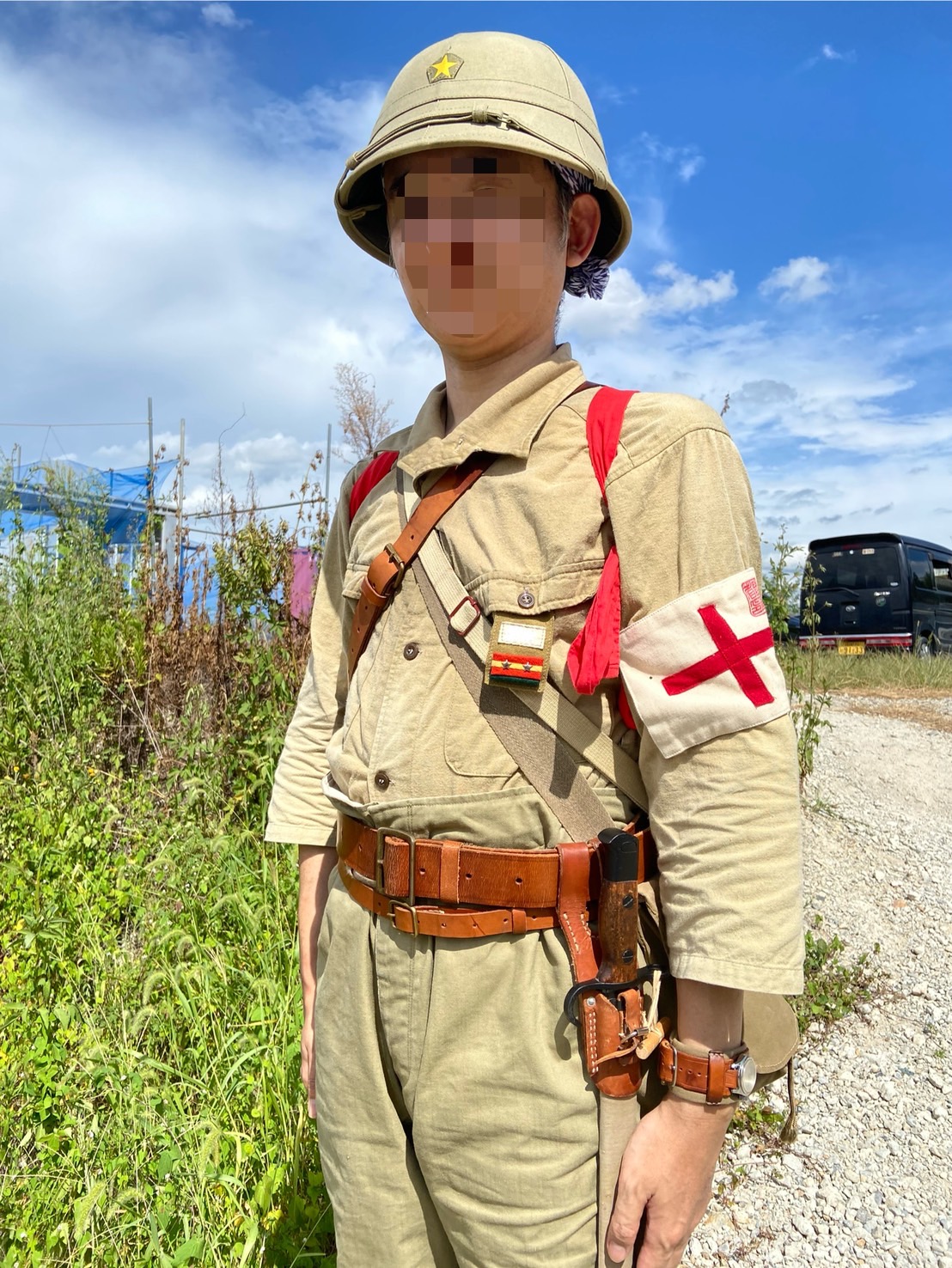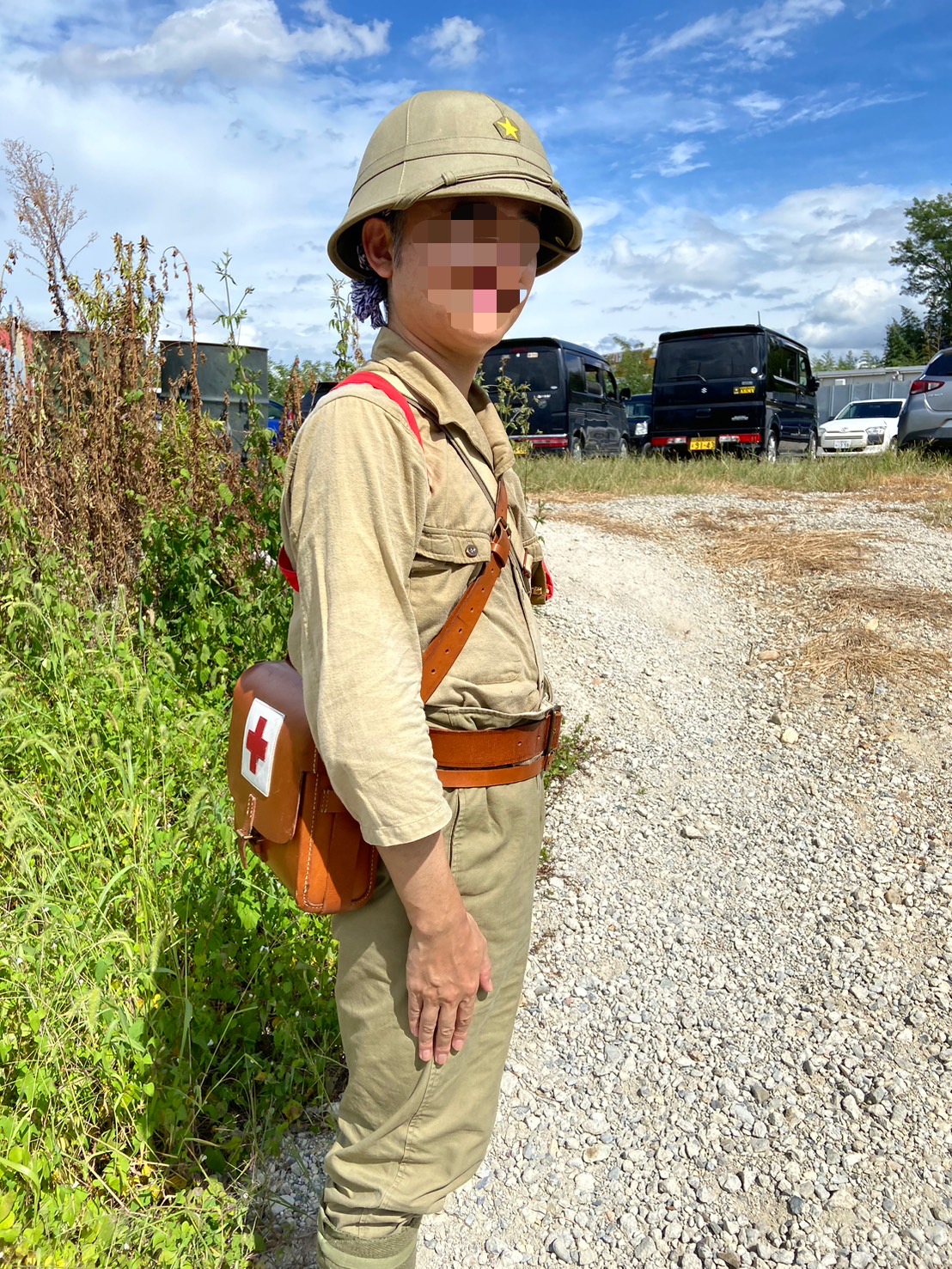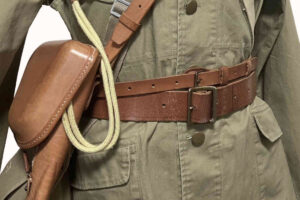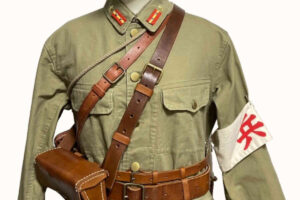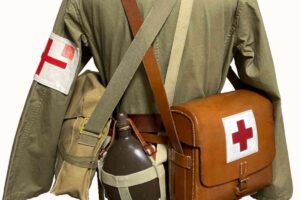Overview
This is an example of the attire worn by Army medic wearing a Tropics 2/3 Sleeves Shirt (Bōsho-juban/防暑襦袢). Also, wearing the Type 98 Summer Trousers on the lower half.
Imperial Japanese Army’s tropical clothing includes three types:
- Tropics Tunic (Bōsho-i/防暑衣) :
It has a jacket-like shape that can be worn with an open collar, and it also has ventilation holes on the sides. - Tropics Half Shirt (Bōsho-ryakui/防暑略衣) :
It has a shape similar to a short-sleeved open-collar shirt. - Tropics 2/3 Sleeves Shirt (Bōsho-juban/防暑襦袢) :
It has a shape similar to a 2/3 sleeves open-collar shirt.
The Tropics 2/3 Sleeves Shirt is also available from Nakata Shōten, HIKISHOP, and S&Graf, making it easy to obtain and very useful for summer airsoft games. What I have is not from these three companies but rather, it’s a product from an individual named Nori (野狸/also known as Onizuka-do and Sakurai), who is engaged in the research and development of replicas..
Medics carry a bag with the Red Cross symbol containing medical supplies like medicines and bandages. I have provided a detailed introduction of this Red Cross bag in a separate article, but in this example, since it’s a non-commissioned officer, he is wearing a Medical Kit (Iryō-nō/医療嚢) with a square Red Cross emblem. This Medical Kit is a replica from Nakata Shōten.
The Red Cross Patch is sewn onto the left arm. However, due to its conspicuousness, it was sometimes not worn to avoid being targeted by the enemy.
Example of Attire
Soldiers carry a Bandage Kit (Hōtai-nō/包帯嚢), while non-commissioned officers carry a Medical Kit . According to the uniform regulations, medics are generally not supposed to have a Bread Bag (Zatsu-nō/雑嚢), but in actual mobilized units, they may sometimes be allowed to carry one. When wearing the bread bag, it seems they hung it over the right shoulder, just like the canteen.
The standard attire for a medic is as follows:
- Carry the canteen from the right shoulder to the left hip, ensuring the canteen strap buckle comes to the front of the body by switching the canteen around front to back.
- Fasten the infantry belt with the bayonet attached.
- Sling the Medical Kit (or Bandage Kit ) from the left shoulder to the right bottom and secure it to the body with a dedicated narrow belt. The Medical Kit belt is fastened under the infantry belt. Depending on the situation, the Medical Kit can be moved to the front of the body for use.
- Suspend the gas mask bag (Hikō-nō/被甲嚢) from the right shoulder to the left bottom.
Uniforms and Field Gears Used
- Early Type Field Cap (Replica / Furutakaya)
- Tropics 2/3 Sleeves Shirt (Replica / Nori)
- Type 98 Summer Trousers (Replica / S&Graf)
- Sergeant Rank Insignia (Replica / Nakata Shōten)
- Soldiers’ Leather Belt (Replica / S&Graf)
- Type 5 Canteen (Replica / HIKISHOP)
- Type 40 Medical Kit (Replica / Nakata Shōten)
- Red Cross Patch (Replica / HIKISHOP)
- Type 30 Bayonet (Replica / Windlass)
- Type 95 Gas Mask Bag (Replica / Nori)
An Example of Wearing
This is an example of actual wear in a airsoft game. A red sash is worn for team identification during the game.
Chat of Soshu
My grandfather was conscripted around 1944 at the age of 19 and was initially assigned to an infantry machine gun unit. However, he volunteered for training as a medic midway through. The reason for his volunteering was that he had heard the machine gun unit had a heavy load of equipment and was physically demanding, whereas being a medic was considered easier. Unfortunately, my grandfather passed away when I was in junior high school, so I couldn’t gather many details from him. According to his accounts, he was issued a pistol for self-defense. He was the rank of Private.
When I asked my grandfather what kind of pistol it was at the time, he replied that it was a small, old-fashioned revolver. If it were today, I would ask, “Did you carry a handgun holster?” but back then, I didn’t think to ask about that. These units were preparing for a mainland battle, so even the medics might have been expected to take up arms and fight.
